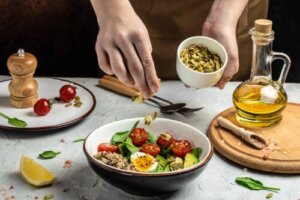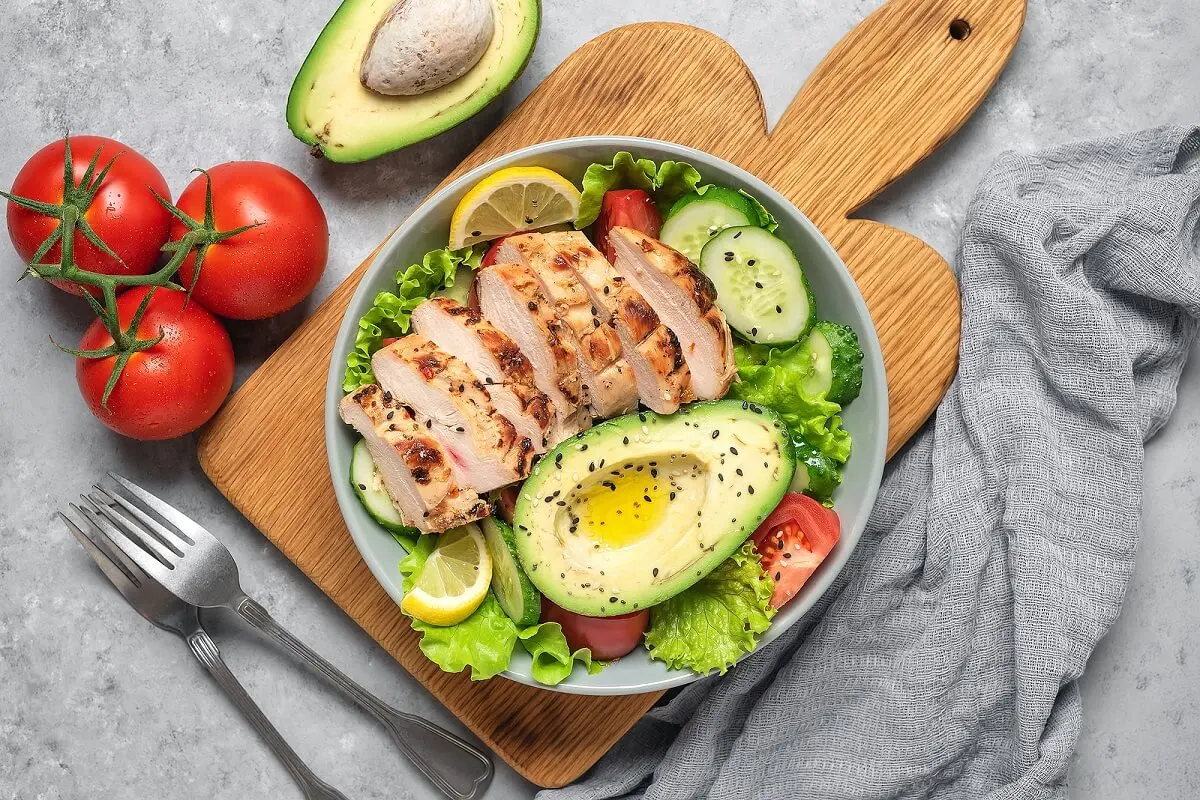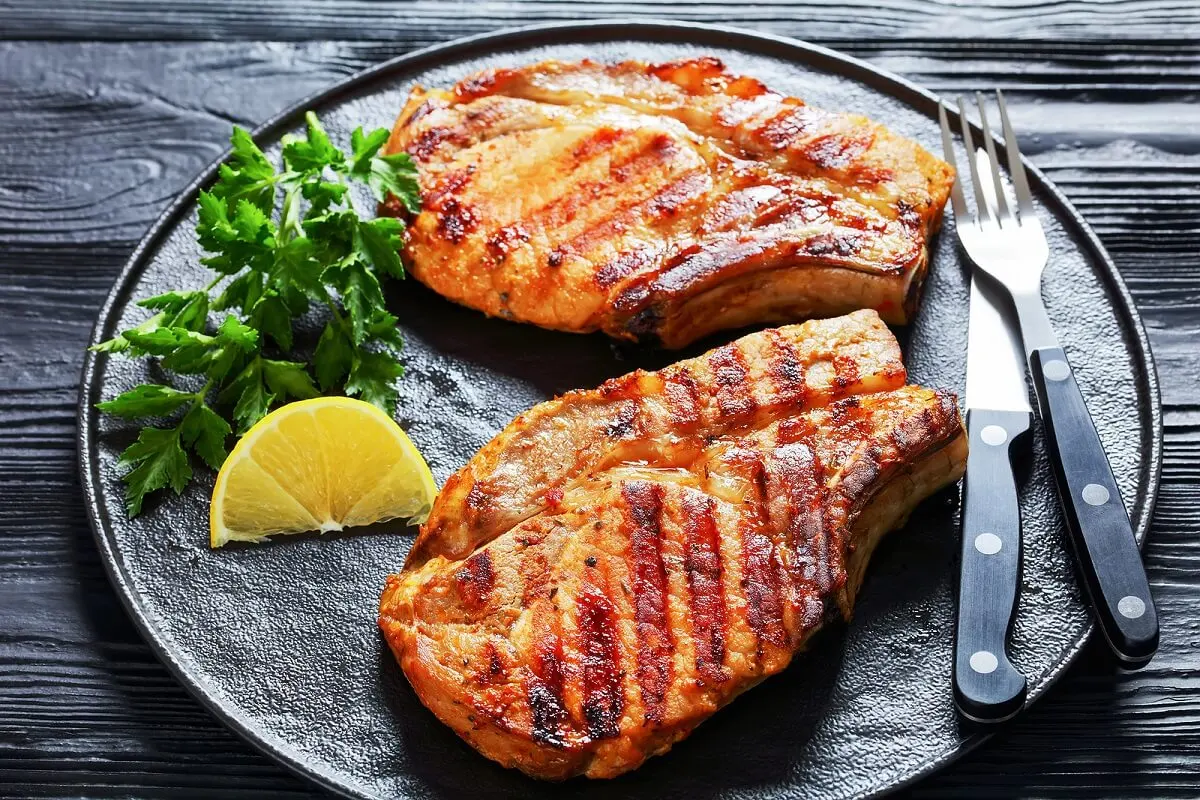The Ketogenic Diet: A 7-day Menu Example


Written and verified by the nutritionist Maria Patricia Pinero Corredor
The ketogenic diet dates back to 100 years ago when it was first applied to children with difficult-to-control epilepsy. In fact, today it’s the main non-pharmacological option against this disease. However, it’s also become a trend as an ally for weight loss, as many celebrities have promoted it.
What does it consist of? The ketogenic diet is considered an unconventional diet, since the main source of energy is fat and protein instead of carbohydrates. For this reason, it’s sometimes tedious to plan your menus. Here’s an example for 7 days. Take note!
How does a ketogenic diet work?
To understand a little better what happens with the ketogenic diet – also known as keto diet – we must start with the fact that conventional diets use carbohydrates as the main source of energy. Meanwhile, in the ketogenic diet, these are reduced to a minimum of 50 to 60 grams per day, while fats are increased.
According to experts, this leads the body into a metabolic state, known as “ketosis.” Since energy can’t be processed from carbohydrates, it’s then forced to burn stored fats. In this process, ketones are generated, which are used as fuel – hence its effectiveness in weight loss.
That said, the keto diet prioritizes protein and fatty foods, such as the following:
- Poultry
- Fish
- Seafood
- Meats without visible fatty tissue
Now, with regard to fats, the key is to avoid hydrogenated fats and excess saturated fats. Instead, it’s better to choose polyunsaturated fats, such as those that provide omega 3, 6 and 9.
Similarly, it’s good to choose a minimum of vegetables and fruits with a low proportion of carbohydrates. Thus, your diet is enriched with dietary fiber and antioxidants.

We think you may also enjoy reading this article: The Lazy Keto Diet: What Is It and What Are its Risks?
Allowed and forbidden foods
When implementing the keto diet, it’s necessary to consider that some foods aren’t recommended, either because of their high carbohydrate content or because they are ultra-processed. In addition, saturated fat should be limited as much as possible. Let’s take a look at it in detail.
Permitted foods
- Seed oils: These are abundant in polyunsaturated fats such as omega 6 and omega 3.
- Butter: This is a dairy derivative that provides energy, medium-chain fatty acids, and vitamin A.
- Oilseeds: These are a good source of essential fatty acids, such as linoleic and linolenic acid.
- Red and white meats: It’s recommended to remove the external fat when consuming them.
- Fish and seafood are a source of high-quality protein and omega 3 fat, related to brain and cardiovascular health.
- Eggs provide protein of high biological value. In addition, they contain healthy fats such as omega 3, vitamin A and minerals.
- Tofu, tempeh, and soy contain good quality vegetable protein. Soybeans are a source of linoleic and linolenic acid.
- Green vegetables contain fiber, vitamins B2 and B1, and are a source of iron.
- Red fruits and blueberries such as strawberries, blackberries, and raspberries. They contain anthocyanins with antioxidant properties and vitamin C.
- Citrus fruits such as lemon, orange, tangerine and grapefruit. They’re a source of beta-carotene and vitamin C.
- Dairy products such as yogurt, cheeses, and fermented kinds of milk (such as kefir). They’re high in calcium, phosphorus, and medium-chain fatty acids.
- Cereals and whole-grain derivatives: Although they also provide starch, it’s preferable to select them for their fiber content.
Prohibited foods
- Starchy vegetables: These contain high starch values, such as yams, cassava, sweet potatoes and tubers such as potatoes.
- Cereals and refined derivatives: This is due to their high starch value. These include rice, corn, barley, oats, breads, cakes, pies, cookies, and pastries.
- Sugar and sweet products: These significantly increase the carbohydrates that are restricted in the keto diet.
- Ultra-processed foods: Many of these products are added starches and saturated fats.
- Fruits high in sugars: This includes pineapple, banana, sapote, among others.
- Sweet roots like beets and carrots. Sugars predominate in these roots.
- Saturated fats like hydrogenated oils and the external fat of meat cuts. Margarines and butter also contain them.
Like this article? You may also like to read: Why a Ketogenic Diet Is Good for You
Sample menu of the ketogenic diet for 7 days
Below, we’ll share a 7-day menu to implement the ketogenic diet. However, it’s important to consider that it’s only an example. The best way to follow this diet model is under the supervision of a nutritionist.
1. Monday
- Breakfast: An omelet with mozzarella cheese and basil. This cheese can be substituted with feta, goat, Edam, or gouda, among others.
- Morning snack: Meat patties.
- Lunch: Chicken and avocado salad and a handful of blueberries.
- Afternoon snack: A milkshake with milk, almond butter and whey protein powder.
- Dinner: Meatballs with zucchini noodles dipped in cream sauce.
Tuesday
- Breakfast: Baked eggs served on a bed of avocado and black coffee or decaf, if preferred.
- Morning snack: Whole-wheat toast with cheese and salmon.
- Lunch: Clams, prawns, and mushrooms pan-fried and half a fresh orange.
- Afternoon snack: Celery sticks covered with almond butter.
- Dinner: Grilled pork skewers with peppers, cauliflower, and sautéed broccoli.
Wednesday
- Breakfast: Green tea and lemon water and whole milk yogurt with coconut and hazelnuts.
- Morning snack: Cottage cheese with raspberries or any other red fruit, such as blackberries, or strawberries.
- Lunch: Cauliflower risotto with bacon + sautéed spinach and chard with butter and a handful of toasted pumpkin seeds.
- Afternoon snack: Coconut milk smoothie with strawberries or blackberries.
- Dinner: Tomato salad and salmon and mushroom omelet and Greek yogurt with blueberries.
4. Thursday
- Breakfast: Green tea and lemon water and an avocado stuffed with cream cheese and almonds.
- Morning snack: A handful of walnuts with 1/4 cup of berries.
- Lunch: Fish and pumpkin gratin and Brussels sprouts sautéed with cream cheese.
- Afternoon snack: Slices of grilled cheese with bell pepper strips.
- Dinner: Veal carpaccio with hazelnut oil and parmesan and roasted vegetables and a handful of sautéed almonds.
5. Friday
- Breakfast: Peanut butter pancakes and green tea.
- Morning snack: Two hard-boiled eggs.
- Lunch: Chicken curry with coconut milk and yellow peppers.
- Afternoon snack: Tuna salad, tomato and mayonnaise.
- Dinner: Tofu breaded with sesame and mushrooms sautéed with olive oil and a handful of walnuts.
6. Saturday
- Breakfast: Coffee with coconut pancakes.
- Morning snack: Zucchini chips with bread tempura and beaten egg.
- Lunch: Chicken fillet with almond flour and bed of vegetables with cucumber and goat cheese.
- Afternoon snack: Steamed mussels.
- Dinner: Shrimp au gratin with fresh cream and grated Emmental cheese and mini blueberry muffins.
7. Sunday
- Breakfast: Eggplant stuffed with boiled egg and goat cheese au gratin and green tea.
- Morning snack: Fat-free Greek yogurt with crushed walnuts.
- Lunch: Veal cutlet with cream and mushrooms and zucchini noodles with walnut oil.
- Afternoon snack: Celery strips and peppers dipped in guacamole.
- Dinner: Pork chop with mashed cauliflower and cabbage salad.

Side effects and recommendations
To follow the ketogenic diet, it’s very important to maintain regular controls of ketogenic bodies in blood and urine. It’s also necessary to keep track of height and weight.
Initially, this type of diet can cause secondary symptoms similar to the flu. Some of the most frequent are the following:
- Nausea
- Digestive discomfort
- Hunger
- Decreased energy, mental capacity, and poor performance
The water and mineral balance of the body may also be modified. Therefore, it’s recommended to consume between 3000 and 4000 milligrams of sodium, 1000 milligrams of potassium and 300 milligrams of magnesium a day.
To begin with, it’s best to eat until you’re full. Do not restrict your calories too much. Because of this, it’s best to do so under the guidance of a nutritionist.
All cited sources were thoroughly reviewed by our team to ensure their quality, reliability, currency, and validity. The bibliography of this article was considered reliable and of academic or scientific accuracy.
- Dowis, K., & Banga, S. (2021). The potential health benefits of the ketogenic diet: a narrative review. Nutrients, 13(5): 1654. https://www.mdpi.com/2072-6643/13/5/1654
- Masood, W., Annamaraju, P., Khan Zuheb, M. Z., & Uppaluri, K. R Ketogenic Diet. [Updated 2023 June 16]. In: StatePearls [Internet]. Treasure Island (FL): State Pearls Publishing; 2024 Jan. https://www.ncbi.nlm.nih.gov/books/NBK499830/
- Paoli, A., Rubini, A., Volek, J. S., & Grimaldi, K. A. (2013). Beyond weight loss: a review of the therapeutic uses of very-low.carbohydrate (ketogenic) diets. European Journal of Clinical Nutrition, 67: 789-796. https://www.nature.com/articles/ejcn2013116
- Watanabe, M., Tuccinardi, D., Ernesti, I., Basciani, S., Mariani, S., Genco, A., Manfrini, S., Lubrano, C., & Gnessi, L. (2020). Scientific evidence underlying contraindications to the ketogenic diet: an update. Obesity Review, 21(10): e13053. https://www.ncbi.nlm.nih.gov/pmc/articles/PMC7539910/
This text is provided for informational purposes only and does not replace consultation with a professional. If in doubt, consult your specialist.








